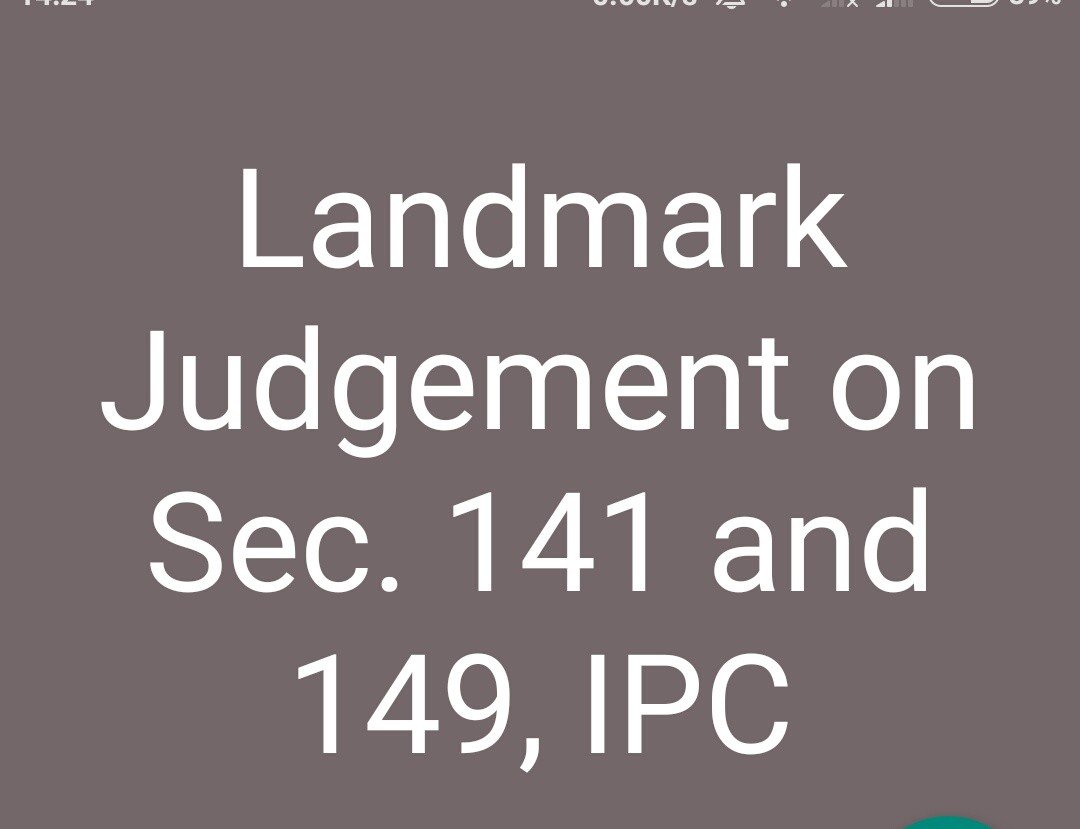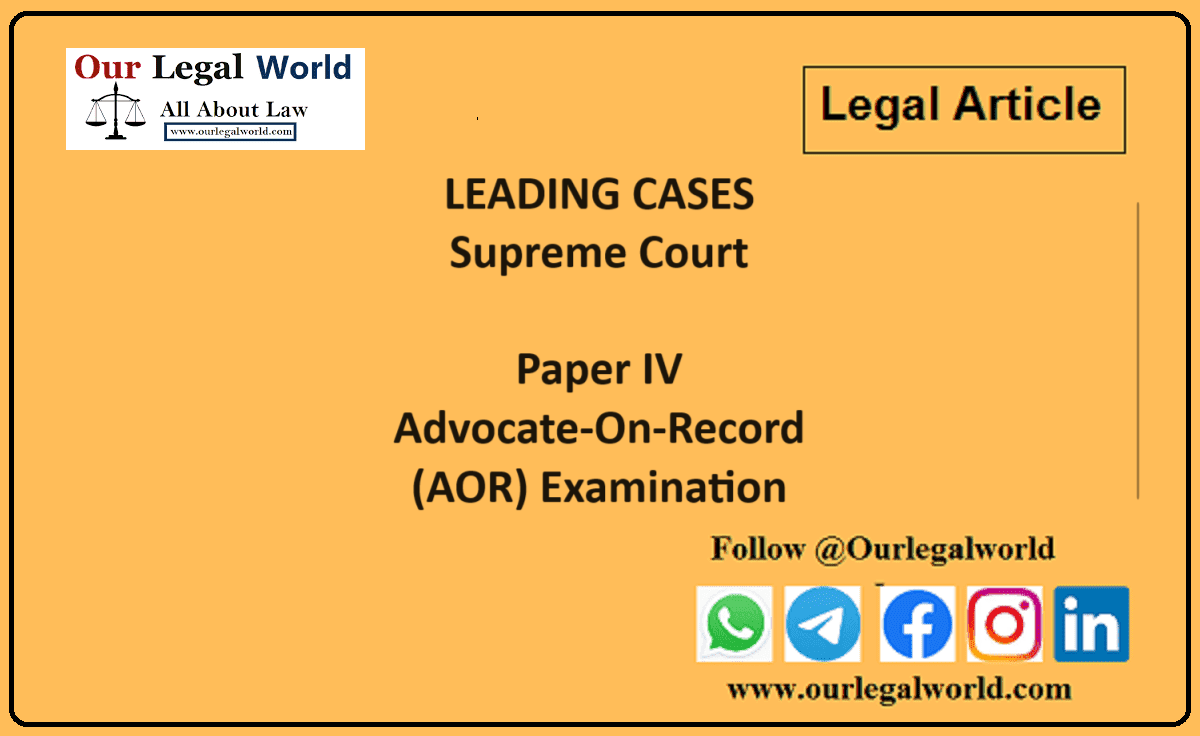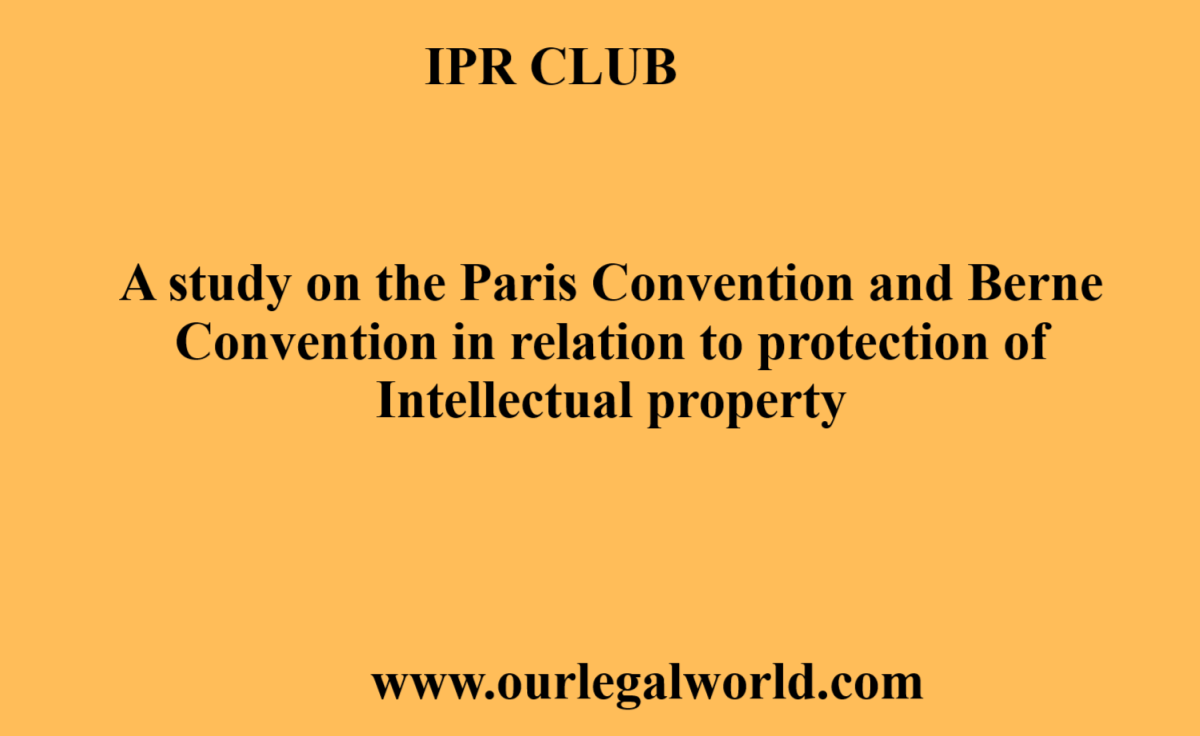Landmark Judgment on Section 141 and 149 of IPC
Ingredients of Unlawful Assembly in India – Section 141 of I.P.C.
Ingredients:
(i) An assembly of five or more persons;
(ii) A common object;
(iii) The common object must be one of the five mentioned in the section;
(iv) Such object is common to all the members;
(v) Members joined or continued to join such assembly;
(vi) They acted dis-honestly; and
(vii) They assembled knowingly.
Section 149 of Indian Penal Code, 1860 – Explained
Every member of unlawful assembly guilty of offence committed in prosecution of common object:
If an offence is committed by any member of an unlawful assembly in prosecution of the common object of that assembly, or such as the members of that assembly knew to be likely to be committed in prosecution of that object, every person who, at the time of the committing of that offence, is a member of the same assembly, is guilty of that offence.
1. Kartar Singh v. State of Punjab (1962) 2 S.C.R. 395
2. Dharampal v. State of U.P AIR 1975 S.C. 1917
3. Bhimro v. State of Maharashtra, 2003 Cri.L.G. 1204 (S.C.)
4. Amerika Rai & others v. State of Bihar (2011) 4 SCC 677
5. Charan Singh v. State of U.P (2004) 4 SCC 205
6. Bhanwar Singh v. State of M.P. (2008) 16 SCC 657
Enforcement of right or supposed right:
The phrase “enforce a right or a supposed right” can only apply when the party claiming the right has no possession over the subject, to the right, and therein lies the distinction between enforcing a right and maintaining a right.







![Tax Law Internship Opportunity at Legum Attorney [Chamber of Ashish Panday], Delhi [Tax Litigation]: Apply by 2nd November](https://www.ourlegalworld.com/wp-content/uploads/2024/10/Legum-Attorney-Intern.png)
